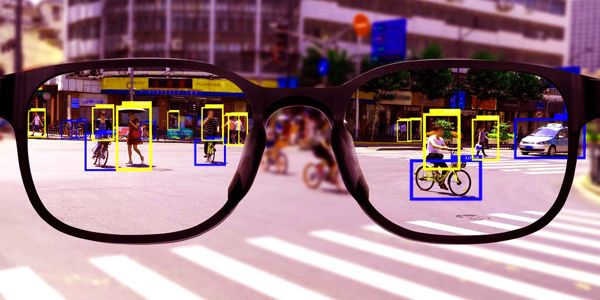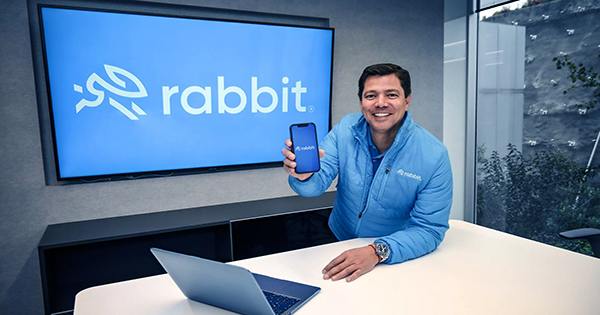Augmented reality (AR) is poised to revolutionize the way people complete essential daily tasks, but older adults, who stand to benefit the most from the technology, will be excluded unless more thought is put into designing software that makes sense to them.
Researchers at the University of Bath in the United Kingdom collaborated with designers from the Bath-based charity Designability to highlight the dangers of older adults falling through the cracks. A paper describing their work was given an honorable mention at this year’s Human-Computer Interaction Conference (CHI2021), the world’s largest of its kind.
The study concludes that adults over the age of 50 are more likely to complete AR-prompted tasks (such as ‘pick up the cube’ followed by’move the cube to the blue area’) when the steps are demonstrated by a ‘ghosthand’ demonstrating the action rather than the more commonly used arrow or other visual aid.
Many manufacturers of augmented reality software, according to the research team, fail to incorporate the needs and preferences of older people into their application designs. “We can’t expect people to benefit from AR technology if they can’t follow the prompts,” said Dr. Christof Lutteroth of the University’s Department of Computer Science.
Older people affected by memory loss have much to gain from AR technology, yet a study exploring the use of augmented reality to support older adults at home finds the user interface is sometimes confusing for those aged 50+.
“A lot more thought needs to go into understanding what older adults need from augmented reality, so users in this group understand the prompts they’re given right away,” said Thomas Williams, the Doctor of Engineering student (funded by the EPSRC) who conducted the research from the university’s Centre for Digital Entertainment.
“AR technology has great potential for improving the lives of older adults,” he continues, “but most AR designers give little or no thought to the type of augmentations they use for this population.”
Supervising the project were Dr. Lutteroth and Dr. Simon Jones, also from Bath’s Department of Computer Science, Dr. Elies Dekoninck from the Department of Mechanical Engineering, and Dr. Hazel Boyd from Designability.
Participants in the study were asked to lift, move, lower, open, and close three-dimensional shapes on a foam board in response to four different types of visual instruction displayed on a laptop running the AR application. Overall, participants preferred the ghost hand over other AR prompts, and they completed tasks faster and with more confidence. They responded up to twice as fast and twice as accurately when aided by the hand as when using another, more commonly used promptly. Participants said they could relate to the hand and that it was clearer to them than the other visual prompts.
Demonstrations delivered by three other ‘augmentations’ — an arrow, a transparent ghost of the object, and a pulsating transparent ghost — frequently resulted in participants hesitating before taking action and requiring more viewings of the visual instructions to complete the task. It also made participants feel less confident that they had completed the task correctly.
“Although augmented reality technology has great potential for improving the lives of older adults, this user group is rarely considered as a target for AR development,” Dr. Lutteroth said. “I believe this is the first study to look into the accessibility of augmented reality technology to older users.”

HOW AR CAN HELP WITH DEMENTIA AND MEMORY PROBLEMS
Researchers believe that AR technology will soon be used to help others:
• Understand what it is like to live with a cognitive impairment such as dementia;
• Improve assessments of fall-prevention modifications to older adults’ homes;
• Reduce navigation- and distraction-related errors with in-car navigation systems; and
• Provide training for improving spatial direction.
The research team sees a lot of potential for using AR technology to help people with dementia and other memory issues. A task like preparing food, hand washing, or making a cup of tea can be broken down into individual steps using AR, with each step represented simply and clearly on a screen or AR glasses, making the job far easier to complete successfully. AR is also being investigated as a diagnostic tool for detecting early signs of cognitive decline and providing people with a dementia diagnosis earlier.
“Activities of daily living that we take for granted can be more difficult for people with dementia, and AR prompting could make a big difference for them if designed appropriately,” said Dr. Boyd.
INCLUSIVITY
So, why are older adults being excluded from AR research? “Designers frequently struggle to understand how non-designers and older people think if they aren’t heavy users of technology.” Dr. Jones explained.
“Another common issue is that designers frequently prioritize in an exclusive manner, focusing on the aesthetics of an application rather than the ease of use for all users. This is fine if you’re a frequent user of an application, but it violates an important usability principle: you shouldn’t have to read a manual to accomplish what you’re trying to accomplish.”
AR is becoming increasingly popular in medicine, cultural heritage tourism, industrial assembly, and, more recently, the home. It enables people to immerse themselves in a real-world environment by using their smartphones or special glasses to enhance the objects in their immediate vicinity with digital content (such as a ghost hand). Computer scientists anticipate that this technology will become increasingly integrated into all aspects of our daily lives over the next decade.
“We’ll be using AR for everything from fixing our own washing machines to deciding whether we should take the bus from bus stop 1 or 2 as we walk down the street,” Dr. Dekoninck explained.
With the release of Pokémon Go in 2016, many people were introduced to augmented reality for the first time. Players could use their smartphone screens to spot creatures from the Pokémon universe superimposed on the real world in this AR-enhanced game.















